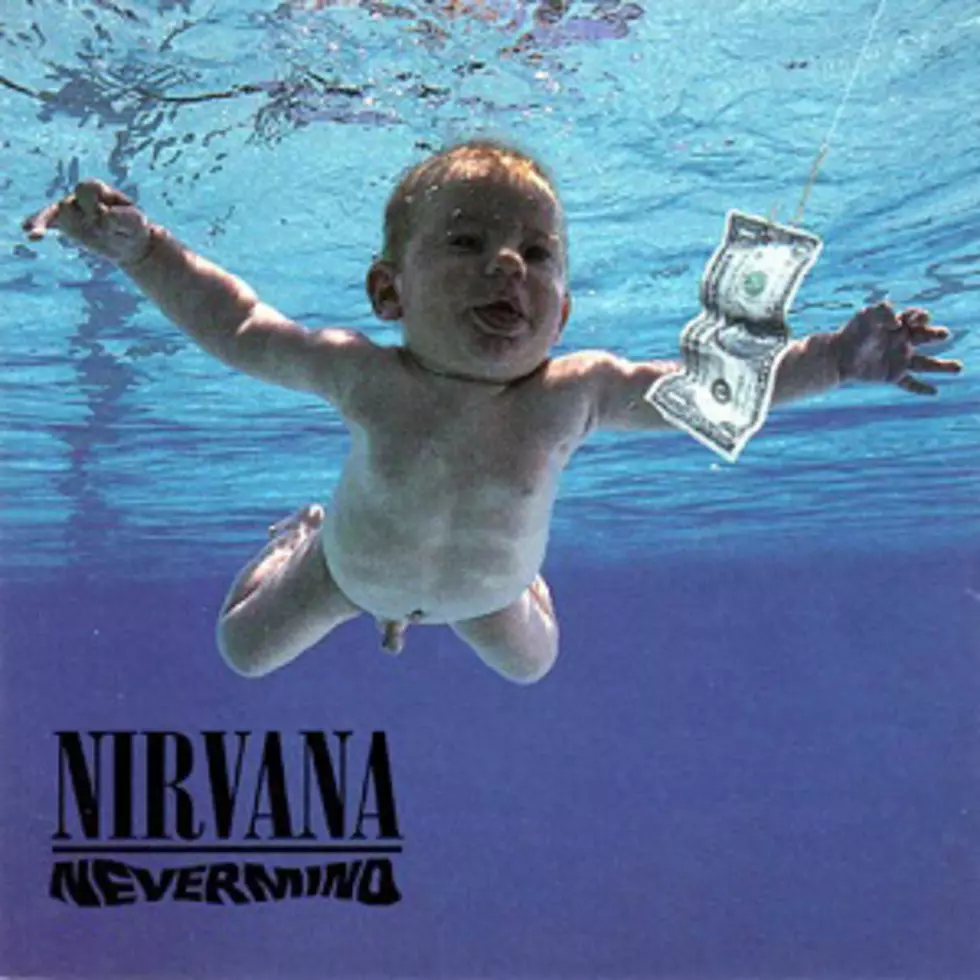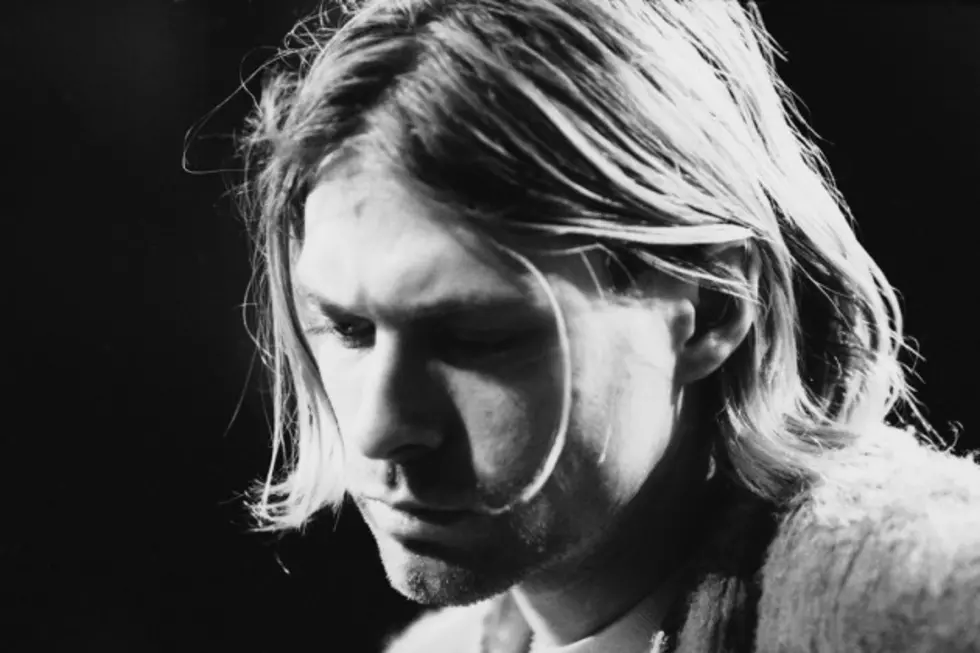
Cover Stories: Nirvana, ‘Nevermind’
"Full of poetry and cynicism." That's how album cover legends Storm Thorgerson and Aubrey Powell of Hipgnosis fame describe Nirvana's Nevermind sleeve in 100 Best Album Covers. That's high praise for an album cover that wasn't meant to happen.
In the same book, cover designer Robert Fisher remembers the band as a group of fresh-faced innocents who were open to collaboration. He was a bit of a fresh-faced innocent himself: Fisher had only been out of art school for a year or so. "This was the first cover that I was allowed to do on my own," he told the authors.
Apparently, Kurt Cobain showed up with two ideas. The first was a photo of an underwater birth. For the second, the singer showed the designer the monkey picture that appears on the album's back cover. Fisher ran with the underwater birth idea.
There's a slightly different version of the story, though, as relayed by Charles Cross in a September 2011 story for Spin:
Kurt did come up with the cover idea for 'Nevermind,' but his initial idea bore little resemblance to the final image of a baby floating naked in a pool. He had seen a late night television show on underwater birthing, and wanted a photograph of a baby’s head right as it began to exit the vagina — he went as far as to sketch out the image in his journal. Yet when Kurt tried to license the gory and bloody photograph, he was rebuffed. The naked baby photo was the back-up plan.
Robert Fisher's version in 100 Greatest Album Covers makes no reference to Cobain trying to license an image:
I researched photographs of underwater births but found them way too graphic for an album cover. Although the shock value was good, Geffen would never have approved it. I found a picture of a baby swimming underwater that I liked. I showed Kurt the baby picture and he liked it but felt it needed something more.
The cost to license the picture was prohibitive, so Geffen hired Kirk Weddle to shoot a similar photo. "The band hadn’t exploded yet, they were below my radar when I did the shoot," he told Digital Photography School. Geffen paid the photographer $1,000 for his services.
Weddle set up shop at a swimming school in Pasadena and had a bunch of parents bring their babies down. One of those parents was Rick Elden, who by some accounts was a friend of sleeve designer Fisher, and by others was a friend of photographer Weddle. Elden's son, Spencer, picks up the story in a January 2015 article for The Guardian:
I was four months old and my dad was attending art school at the time, and his friends would often ask for help with their projects. So his friend the photographer Kirk Weddle called him and said, “Do you want to make some money today and throw your kid in the pool?” And he agreed. My parents took me down there, apparently they blew in my face to stimulate my gag reflex, dunked me in, took some pictures, and pulled me out. And that was it. They were paid $200 and went to eat tacos afterwards. No big deal.
Weddle recalls that the photo of Spencer "stood out as the perfect shot," guaranteeing the kid immortality in exchange for two seconds in a swimming pool. "I am glad they chose me. And I am also glad it wasn’t for something like a Backstreet Boys album," Elden wrote in The Guardian.
As for the photo itself, if you look closely at the baby's right side you can make out his father's hand print -- interesting trivia, but not really a point of concern. No, Geffen's concern was that retailers, shoppers and sundry market forces might be offended by the baby's penis. Apparently the label went so far as to mock up a penis-free version of the sleeve. Jason Draper writes in A Brief History of Album Covers that "Cobain refused to use it, however, demanding that if a compromise were to be made, it had to be a sticker over the sleeve which read, 'If you are offended by this, you must be a closet pedophile.'" Geffen backed off.
With that settled, there was still the matter of that "something more" that Cobain felt that the photo needed. Back to Fisher:
We threw all kinds of ideas around and at one point Kurt half joking suggested a fish hook. We spent the day thinking of all the things you could put on a fish hook; there was meat, a CD, a fish. Someone suggested a dollar bill and that won.
The end result was one of the most compelling and iconic album covers of all time, but what does it mean? Thorgerson and Powell think the sleeve is "a cutting critique of contemporary society, which is preoccupied with money and all its materialistic concomitants." The photo's star thinks "it’s about an abandonment of innocence and everyone chasing money sooner and faster." Fisher goes a little deeper:
Kurt was intellectual and deep-thinking about his work, and although he never gave a rationale for the contents of the design, I must assume that the naked baby symbolized his own innocence, the water represented an alien environment, and the hook and dollar bill his creative life entering into the corporate world of rock music.
So what happened next? Close to a year later, Weddle shot the members of Nirvana submerged in a pool -- prints of those photos were offered for sale recently -- and that aquatic theme also carried through into the video for "Come As You Are":
Weddle says of the Nevermind sleeve, "I’m proud of that image, but I’ve moved past it. I’m more interested in tomorrow's shoot." Designer Fisher left Geffen after a 10 year run and now owns his own design studio.
Spencer Elden is an artist himself now, and he embraces his "Nirvana baby" past. You can view a relatively recent photo of him recreating his iconic photo here. And as for Cobain's original vision of an album cover depicting a live birth? Chumbawamba did it three years later on the NSFW front sleeve of 1994's Anarchy.
Rare Photos From Nirvana's 'Nevermind' Shoot
More From Diffuser.fm









